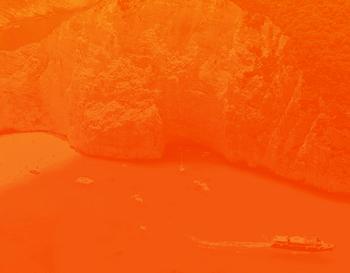The Maltese paleochristian catacombs are amongst the most important early Christian monuments south of Rome. The islands are rich in these type of burial sites which date to the late Roman and Byzantine period, of which many are found on the Rabat plateau, immediately outside the Mdina ditch. In fact the Abbatija tad Dejr site can be found in the area known as Nigret, on the outskirts of Rabat in the face of a low hill overlooking Gheriexem Valley.
The Maltese ancient Christian tombs form regular and frequently sizeable cemeteries below ground level. Several graves are commonly found within the same hypogeum, access to which is provided through one common entrance. The Abbatija tad-Dejr consists of four hypogea (chambers) tunneled next to each other with the first hypogeum being the largest. It is the latest of all the early Christian catacombs found in Malta being excavated during the shifting phase from underground to above ground burials.
Even though these catacombs are smaller than those of Rome, Naples, Syracuse and Sousse, they are very richly decorated. This complex shows evidence of architectural design features such as: sculpted scallop shells, arched pottery shelves, pilasters with pseudo-Corinthian capitals, roundels with the chi-rho monogram (a Christian monogram and symbol formed from the first two letters X and P of the Greek word for Christ), fish-scale decoration, palm fronds, Latin crosses and curled volutes.
The Tal-Abbatija tad Dejr site also has a rock-cut church attached to the catacombs. The church is quite small and rectangular with an altar niche, low carved side benches and a rock-carved pillar which acts as a support for the roof. One of the most important aspects of this church is the painting that was found within the carved niche. This painting shows three figures: a Crucifixion in the middle with the Virgin on one side and the Archangel Gabriel on the other. This painting had been relocated in the past and can now be viewed at the National Museum of Fine Arts. Other painted remains in the catacombs are negligible making this painting one of Malta's earliest existing paintings, possibly datable to the fourteenth century.
Various painted and architectural details indicate that religious activities were still being carried out in this church on a constant base till after 1530. Proof to this are remains of a preliminary drawing of two haloed heads, possibly belonging to two medieval religious figures and two shields carrying respectively the coat of arms of the Knights of St John and the Kingdom of Sicily. Mass was celebrated in this chapel up till 1575 after which it was closed by order of Mons. Dusina due to its poor condition


Similar Topics
-
St Paul's Catacombs Rabat Malta
Posted by Sliema2 in Malta and Gozo Discussion Forum
-
Tal Mintna Catacombs Mqabba Malta
Posted by Sliema2 in Malta and Gozo Discussion Forum
-
The Old Prison in The Citadel Rabat Gozo
Posted by Sliema2 in Malta and Gozo Discussion Forum
-
Are There Limits
Posted by geovil in Tunisia Discussion Forum
-
age limits?
Posted by Ashleigh.H in Greece - Corfu Discussion Forum
